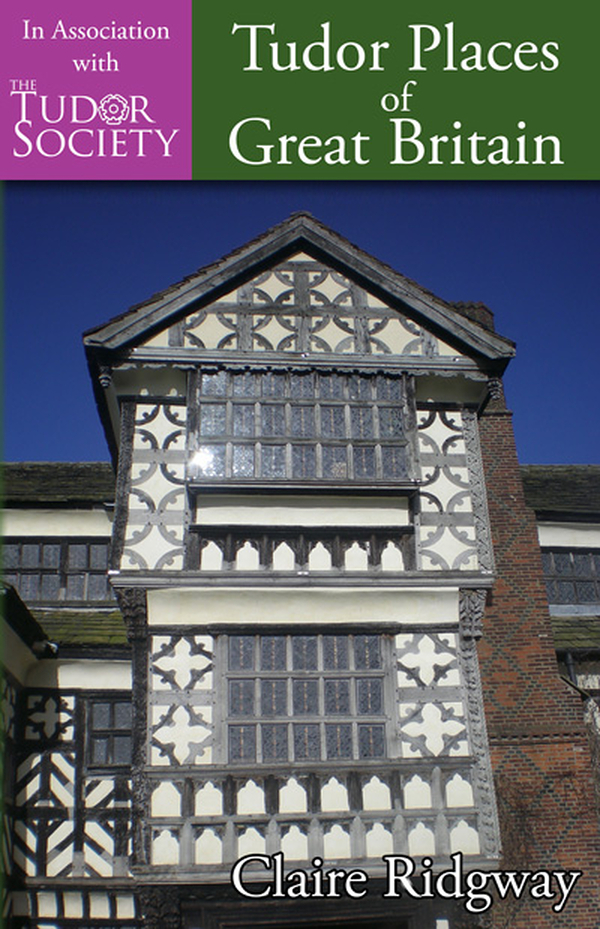
Best-selling author and Tudor Society founder Claire Ridgway joins us today to kick off the book tour for her brand new book! Tudor Places of Great Britain lists over 175 historical sites connected to the Tudor monarchs and important historical figures, from palaces to merchant houses to monastic ruins. Each listing is accompanied by descriptions and highlights, full address and website details so you can plan your trek across historical Tudor England. And now Claire will tell us all about Tudor places that have some spooky inhabitants…
Tall Tales and Ghost Stories by Claire Ridgway
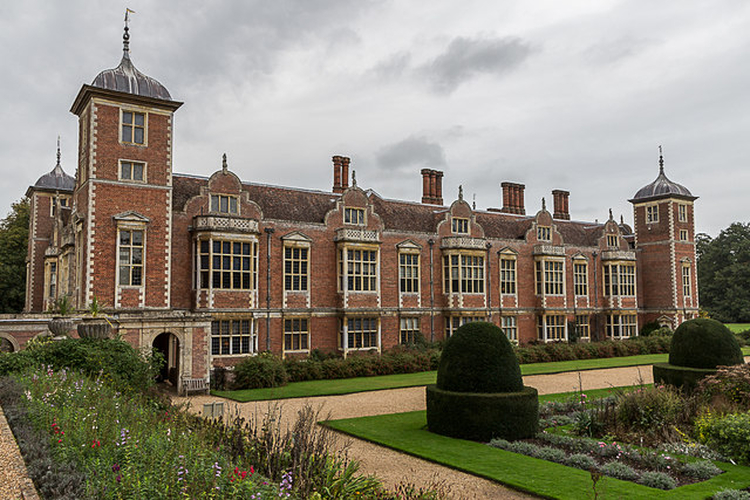
Blickling Hall
Blickling Hall in Norfolk is the probable birth place of Queen Anne Boleyn and although the original Boleyn manor house no longer exists, the Jacobean house built on its site is said to be haunted by Anne every year on 19th May, the anniversary of her execution. Apparently, a carriage pulled by headless horses with a headless coachman arrives at the hall and a headless Anne Boleyn gets out carrying her severed head. The ghostly Anne then roams the hall’s corridors until daybreak, when she disappears.
Blickling Hall is also said to be haunted by Thomas Boleyn, father of Anne, on the date of Anne’s execution. Thomas Boleyn died in 1539 and legend has it that as penance for the untimely deaths of two of his children he must cross twelve bridges before cock-crow on 19th May. With his ghostly coach of headless horses, he starts at Blickling and crosses bridges at Aylsham, Belaugh, Burg, Buxton, Coltishall, Hautbois, Meyton, Oxnead and Wroxham.
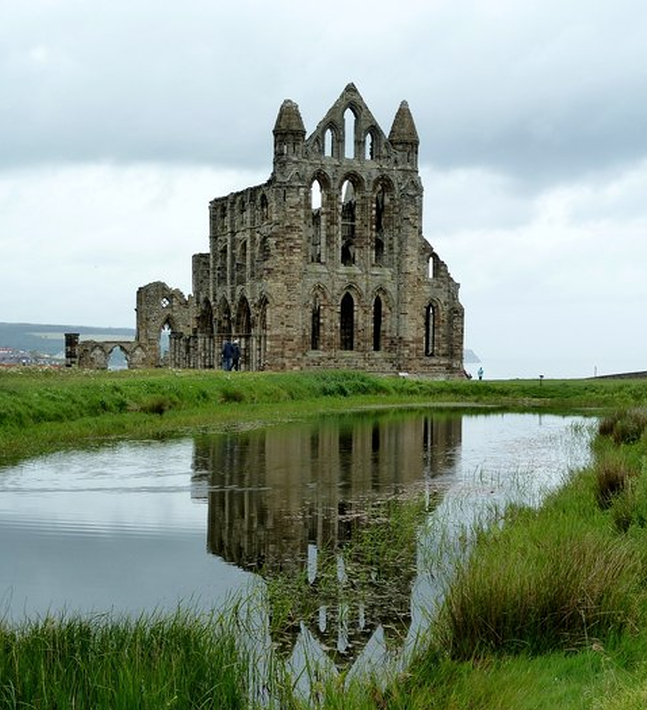
Whitby Abbey
If you visit Whitby Abbey in Yorkshire, you will understand just why its beautiful and atmospheric ruins were used as settings for scenes in Bram Stoker’s Gothic masterpiece Dracula. Stoker was inspired by the imposing ruins and the ancient Whitby legend of the monstrous black dog, or barguest, which leapt ashore as Russian schooner The Demetrios (renamed the Demeter by Stoker) sank in the turbulent seas beneath the abbey. The dog was said to have run up the 199 steps to the graveyard beside the abbey and then disappeared among the dead. It is also said that the barguest roams the North Yorkshire moors and that anyone who is unlucky enough to hear it howling will be dead by dawn. It may well have been the inspiration for Sir Arthur Conan Doyle’s Hound of the Baskervilles.
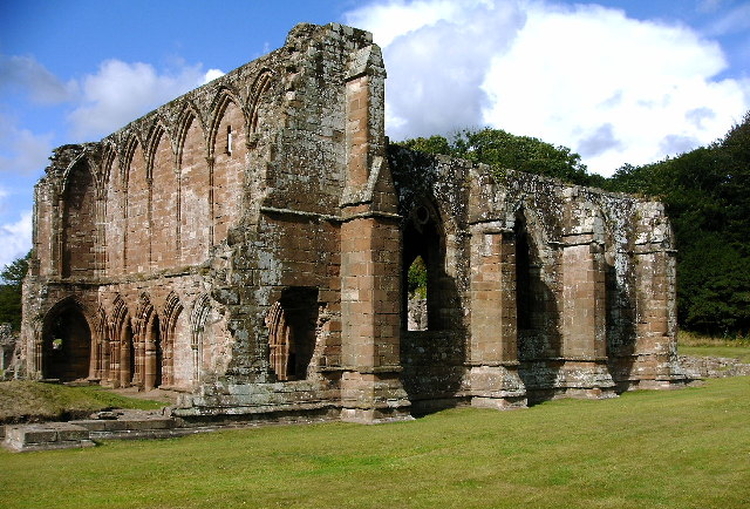
Furness Abbey
The stunning ruins of Furness Abbey are located just outside the town of Barrow-in-Furness in the picturesque Cumbrian countryside. The abbey’s lovely ruins and peaceful location give the site a tranquil and mysterious atmosphere, due in part to the many supernatural legends surrounding the location. At least three ghosts are said to haunt the ruins and it is even said that the Holy Grail and King John’s missing jewels are hidden in its secret passages.
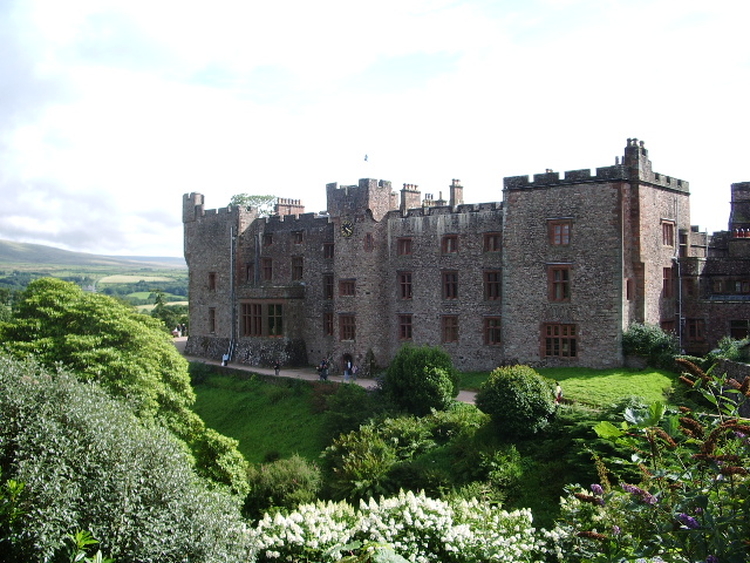
Ordsall Hall
This lovely black-and-white half-timbered manor house in Salford has several ghosts: the White Lady, who is said to haunt the great hall and star chamber; the ghost of Sir John Radclyffe, a previous owner; and the ghost of Cecily, whose presence is always accompanied by the fragrance of roses.
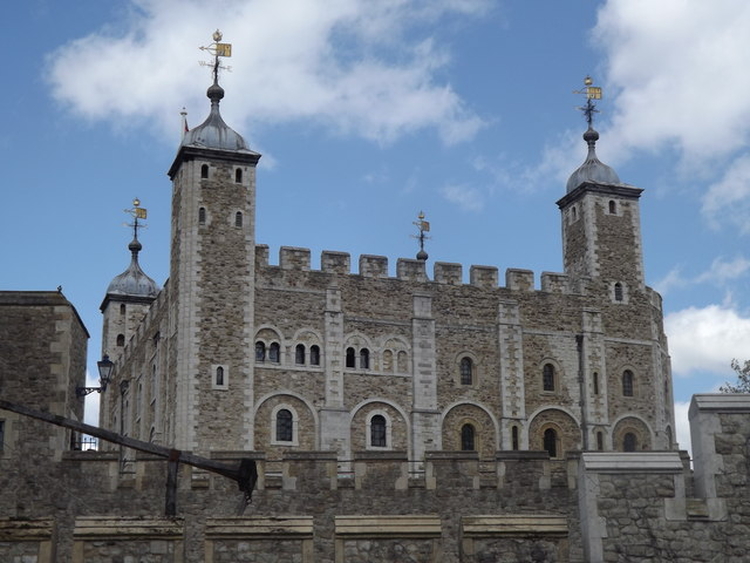
Tower of London
The Tower of London is famous for being the site of much bloodshed and for being the prison of many hundreds, if not thousands, of people since it was first built by William the Conqueror in the late 11th century. It is little wonder, therefore, that it is haunted by a multitude of ghosts.
-
- The Princes in the Tower – In the 15th century it was reported that guards saw the shadows of two children gliding down the stairs of the Bloody Tower before the children, dressed in white nightgowns and holding hands, then appeared in front of the men. The guards believed them to be the ghosts of Edward V and his brother Richard, Duke of York, who had disappeared while being held at the Tower of London. In 1674, the skeletons of two children were found at the Tower and it was believed that they were the remains of the princes.
- Arbella Stuart – Arbella, or Arabella, Stuart, cousin of James I, was imprisoned in the Tower of London after hatching a plan to allow her husband, William Seymour, to escape from the Tower. After five years of imprisonment in the Tower, Arbella gave up hope and refused to eat, dying in September 1615. Arbella is said to haunt the Queen’s House of the Tower of London.
- Sir Walter Ralegh – It is said that the ghost of Sir Walter Ralegh, who was imprisoned in the Bloody Tower and executed in 1618, appeared at least three times between 1620 and 1705 “to uphold the honour of his Protestant country against the threat of Catholicism”. He has also been seen wandering around the Tower.
- A phantom bear once scared a guard quite literally to death after appearing near the Martin Tower.
- Henry VI – The king who is believed to have been killed on Edward IV’s orders in 1471, while imprisoned in the Tower of London, is said to pace around the Wakefield Tower just before midnight on the anniversary of his death. When the clock strikes twelve he gradually disappears.
- Lady Jane Grey – On 12th February 1957, the anniversary of her execution, two guardsmen saw a white shape on the battlements which they believed to be Lady Jane. Her husband Guildford Dudley has also allegedly been seen, sobbing in the Beauchamp Tower.
- Anne Boleyn has been spotted at the Tower on various occasions. In 1817, a sentry is said to have died of a heart attack after being confronted by Anne’s ghost on a stairway and in 1864 a soldier from the King’s Royal Rifle Corps, who was being court-martialed for falling asleep on duty, claimed that he had been knocked unconscious after being accosted by a woman wearing a Tudor gown and French hood. When he challenged her, the woman carried on walking towards him and he realised that there was no head in the hood. He charged at her with his bayonet out, but he passed straight through her “body”. A jolt, like an electric shock, knocked him out. His story was corroborated by two of his colleagues. A ghostly Anne has also been seen leading a procession of knights and ladies down the aisle of the Chapel of St Peter ad Vincula, the Tower’s Chapel Royal and Anne’s resting place. This spectacle was seen by a Captain of the Guard in the 19th century, who saw a light in the Chapel but found the door locked. When he took a ladder to the Chapel windows to see what was going on, he saw the ghostly procession, which disappeared after processing down the aisle several times.
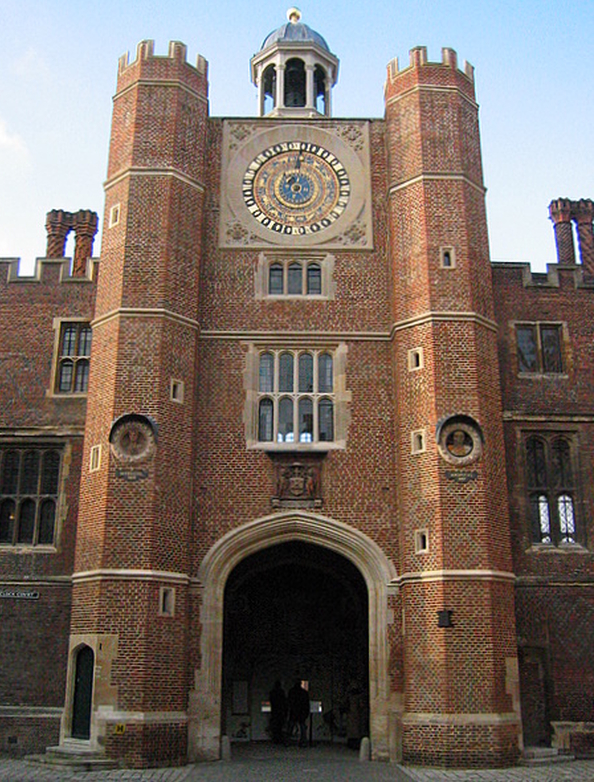
Hampton Court Palace
Jane Seymour and Catherine Howard, Henry VIII’s third and fifth wives, are said to haunt Hampton Court Palace. Jane’s white form has been seen carrying a lighted taper and walking through Clock Court’s cobbled courtyard on or around 12 October, the anniversary of the birth of her son Edward VI. Jane died twelve days after her son’s birth.
According to popular legend, Catherine Howard managed to escape from her imprisonment in her chamber at Hampton Court Palace in 1541 and ran down the gallery to try and speak to the King who was at Mass in his chapel. She was caught before she had chance to explain herself to the King and she was taken back to her chamber screaming. That is apparently why a ghostly form is seen drifting down the gallery, now known as the Haunted Gallery, with a “ghastly look of despair” on its face and making “the most unearthly shrieks.”
Another Hampton Court Palace ghost is that of Sibell Penn, Edward VI’s former wet-nurse, who has been sighted on numerous occasions as a “lady in grey” since nearby Hampton Church was pulled down in 1829 and her remains were disturbed.
When I visited Hampton Court Palace a few years ago, my guide told me that the ghost of a little dog has also been seen in the Wolsey Closet of the Palace, and, I suspect you’ve seen the video of the ghostly figure, that’s been nicknamed “Skeletor”, caught on CCTV camera opening a security door at the palace back in 2003.
Those are just some of the ghosts that haunt British historic places and there are many more. Most properties seem to have a grey lady or two in residence!
Images:
Blickling Hall © Christine Matthews
Whitby Abbey reflection © Rob Farrow
Furness Abbey © David Jackson
Muncaster Castle © Alexander P Kapp
Orsdall Hall ©David Dixon
The White Tower ©Colin Smith
Anne Boleyn’s Gateway, Hampton Court Palace © John S. Turner
We have one copy of Tudor Places of Great Britain to give away courtesy of MadeGlobal Publishing. Just leave a comment below telling us which Tudor Palace you would like to visit, or have enjoyed visiting before.
Entries close on Sunday Dec 8th at midnight. Winners have five days to respond. Be sure to check out all the stops on the Tudor Places of Great Britain book tour.

 The Tudor dynasty ruled from 1485 to 1603 and had a huge impact on England and Wales, not only on society but also on the British landscape.
The Tudor dynasty ruled from 1485 to 1603 and had a huge impact on England and Wales, not only on society but also on the British landscape.Henry VIII was a keen builder, building and renovating properties to serve as pleasure palaces, but his Dissolution of the Monasteries also led to historic properties falling into ruin. Tudor favourites spent their new-found wealth building lavish mansions or converting castles into sumptuous manor houses as statements of their success and to impress the visiting monarch.
In Tudor Places of Great Britain, Tudor history author and founder of the Tudor Society Claire Ridgway guides the reader through properties linked to Tudor monarchs and prominent people of the time, from impressive palaces like Hampton Court Palace, through romantic monastic ruins and merchant houses, to unspoilt villages like Lavenham and Weobley. With over 175 listings, which include descriptions and highlights, full address and website details, Tudor Places of Great Britain is a comprehensive guide to British Tudor places.
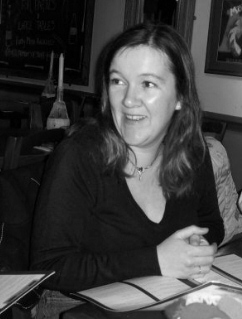 Claire Ridgway is the author of the best-selling books George Boleyn: Tudor Poet, Courtier And Diplomat (Co-Written With Clare Cherry), On This Day In Tudor History, The Fall Of Anne Boleyn: A Countdown, The Anne Boleyn Collection and The Anne Boleyn Collection II, Sweating Sickness In A Nutshell and Tudor Places Of Great Britain. Claire was also involved in the English translation and editing of Edmond Bapst’s 19th century French biography of George Boleyn and Henry Howard, now available as Two Gentleman Poets At The Court Of Henry VIII.
Claire Ridgway is the author of the best-selling books George Boleyn: Tudor Poet, Courtier And Diplomat (Co-Written With Clare Cherry), On This Day In Tudor History, The Fall Of Anne Boleyn: A Countdown, The Anne Boleyn Collection and The Anne Boleyn Collection II, Sweating Sickness In A Nutshell and Tudor Places Of Great Britain. Claire was also involved in the English translation and editing of Edmond Bapst’s 19th century French biography of George Boleyn and Henry Howard, now available as Two Gentleman Poets At The Court Of Henry VIII.
Claire worked in education and freelance writing before creating The Anne Boleyn Files history website and becoming a full-time history researcher, blogger and author. The Anne Boleyn Files is known for its historical accuracy and Claire’s mission to get to the truth behind Anne Boleyn’s story. Her writing is easy-to-read and conversational, and readers often comment on how reading Claire’s books is like having a coffee with her and chatting about history.



